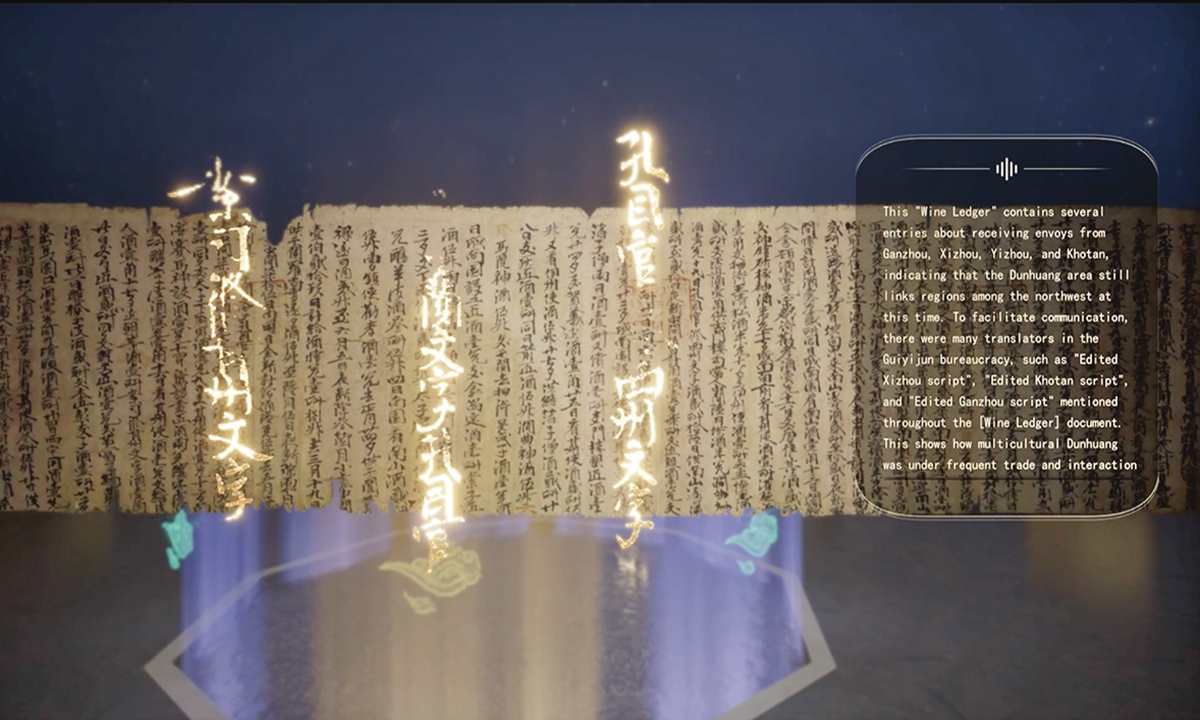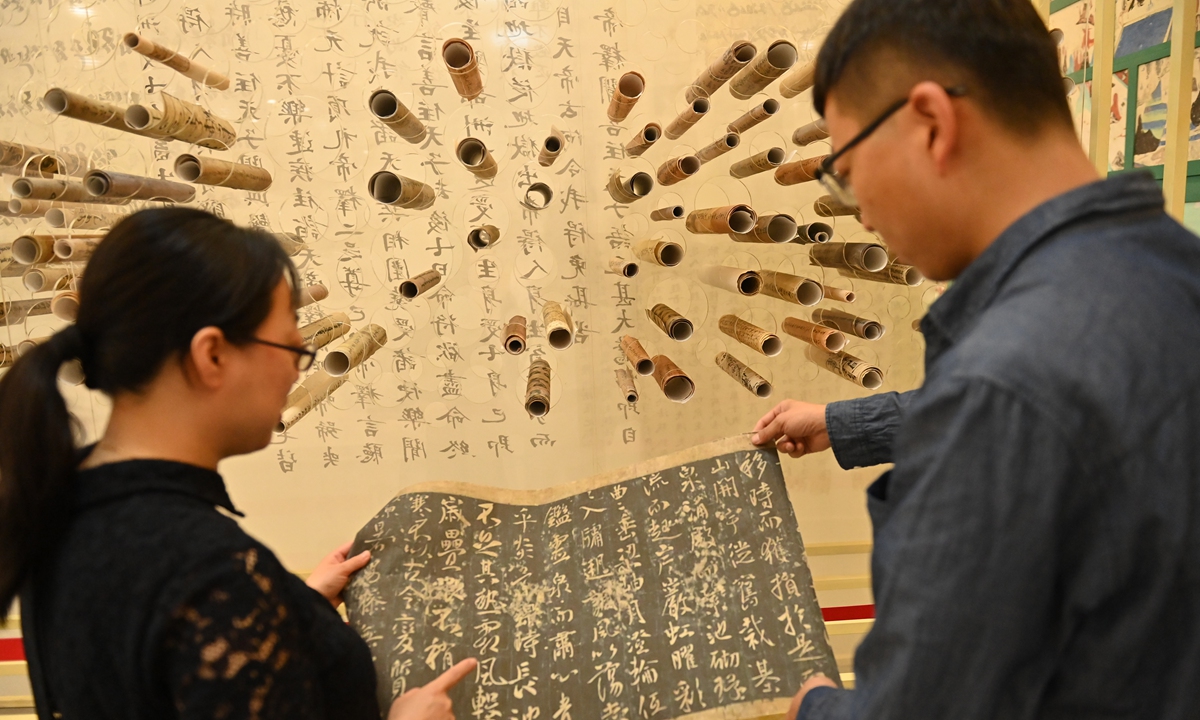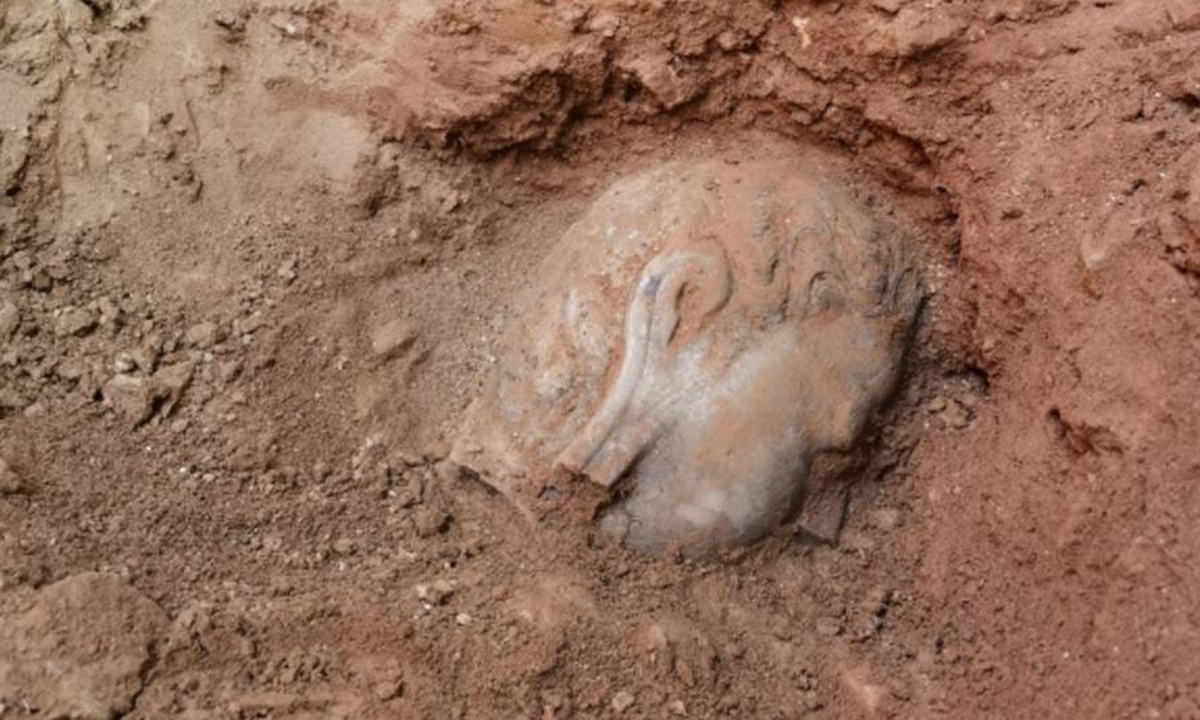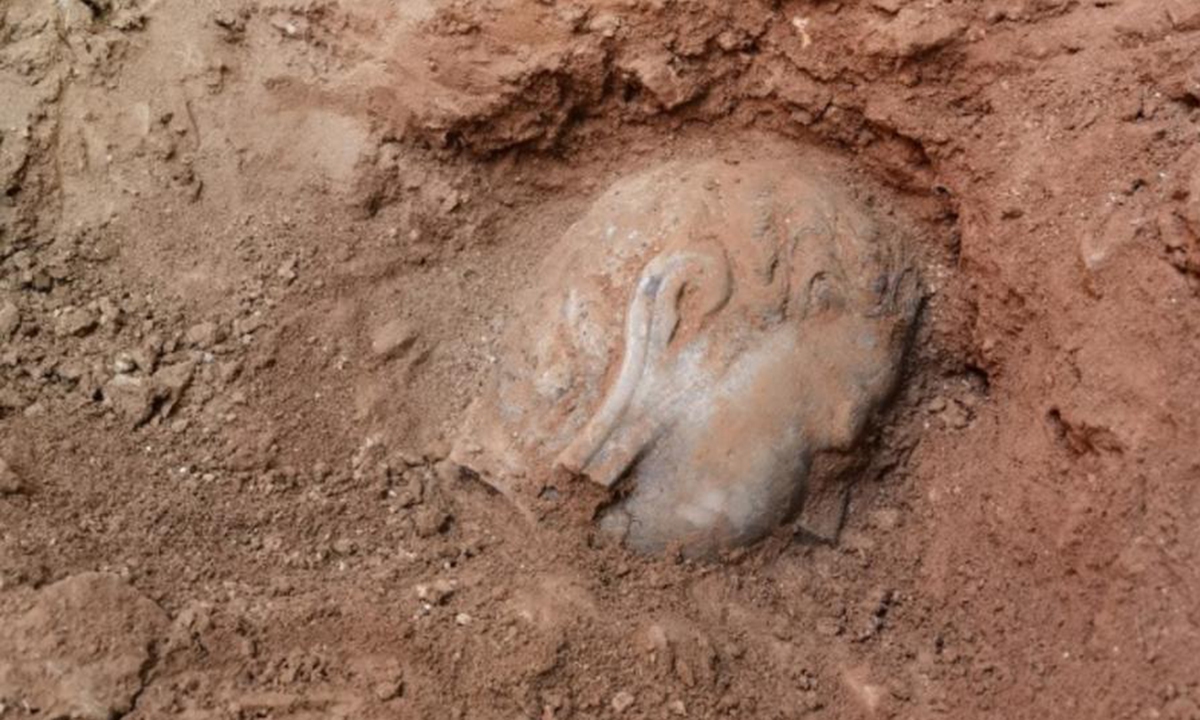Having spent around a year to develop an online digital project that exhibits legacies in the “Sutra Cave” of China’s Mogao Caves, it has recently launched its international version, allowing users mainly in Europe to virtually experience the rise and fall spanning more than a millennium of the cave that is also known as the Dunhuang Library Cave.

A screen shot of a 3D image depicts a “wine ledger” relic discovered in Dunhuang, Gansu Province. Photo: Courtesy of Tencent
Due to its cultural importance and extreme fragile nature, the Mogao Caves in Dunhuang, Northwest China’s Gansu Province, already underwent digital restorations early back to the 1990s. Led by the Dunhuang Academy, the site’s “go-online” strategy, however, is always updating along with rapidly progressing China’s digital technology.
‘Dunhuang Library Cave’
The “Sutra Cave” is one of the Mogao Caves that is more commonly known as “Grotto No.17.” The Dunhuang culture boasts 45,000 square meters of mural arts and more than 2,000 painted sculptures, yet Grotto No.17 that is also dubbed as the “Dunhuang Library Cave” still seems to be an “unfamiliar gem” to most people, Zhao Xiaoxing, director of the Literature Research Institute of the Dunhuang Academy said.
“It has witnessed Dunhuang’s history during the 4th to 11th centuries. If other grottoes have depicted Dunhuang’s culture through images, then the ‘Sutra Cave’ tells Dunhuang’s story with words and texts,” Zhao remarked.
Since April 2024, overseas users are now able to get access to the “unfamiliar gem” by clicking on the website of “Digital Dunhuang.”
Including the introductions to relics, all information on the website have been translated into English and French.
Prior to it going international, in March 2022, the Dunhuang Academy partnered with Chinese technology giant Tencent to develop the online digital cave program through a “cloud gaming” technology.
Compared to traditional digital projects that mainly allow people to browse relics online, the gaming approach allows viewers to be at the virtual Mogao sutra cave. It is like the script play themed on “Dunhuang,” and viewers have six roles to choose from, and they can also interact with eight non-player characters in the game.
The project was carried out under the instruction of China’s National Cultural Heritage Administration (NCHA). It was entirely technology-oriented to have adopted other methods like high-definition digital scanning and AI technologies starting from its first step of collecting organic site’s data.
Recalling scenes of Mogao Caves’ digital journey from the 1990s to the present, Su Boming, director of the Dunhuang Academy said that it has progressed from “collecting and restoring digital data” to “seeking creative data applications.”
According to Yu Tianxiu, deputy director of the academy’s cultural relics digitalization institute, the academy has completed the digital photographing of around 278 caves and 3D reconstruction of 145 painted sculptures until 2022.
Such a change is commended by cultural heritage management expert Dou Siming as the “2.0 version of relic digitalization” in China.
“The fact that such projects can be achieved in China is inseparable to the country’s digital innovative industry and non-cultural Chinese company’s growing sense of cultural responsibility,” Dou emphasized.
In April 2023, the program debuted to domestic Chinese users. Around 1.4 million users were seen tapped into the project’s online mini program, within which more than 400,000 of users have experienced the digital Dunhuang Library Cave online.
“Through such digital creative projects, we discovered that the popularization of Dunhuang culture increased massively, far more than what we had imagined,” Su emphasized. He also revealed that the academy is willing to cooperate with digital companies to continue other projects like the “cloud tour at Dunhuang.”
Cultural creative industry expert Yao Yu told the Global Times that such a new academy-corporation collaboration mode can shed light on sectors of “public cultural education, and help the industrial upgrading of technological companies.” He emphasized that more and more Chinese technological companies are starting to realize the “importance of cultures.”
“We help in not only bringing the country’s non-renewable cultural resources to life, but also by promoting Chinese culture globally,” said Guo Kaitian, senior vice president of Tencent.
“We are taking an exploratory step in exchanging the Chinese civilizations with the world, and also dedicate to promoting mutual learning between different cultures,” Guo remarked.

Zhao Xiaoxing (left) shows and introduces the replicas of documents unearthed from the Dunhuang Library Cave to a journalist at the Dunhuang Art Gallery in Lanzhou, Northwest China’s Gansu Province. Photo: VCG
Nationwide efforts
Adopted by not only the Mogao Caves, the Yungang Grottoes in North China’s Shanxi Province has also experimented on the “digitalization + relics” programs marked by a milestone that in 2012, a digital research department was officially established as part of the heritage site.
Over years of developments, the site has made achievements like successfully collecting data of the grottoes’ façades, and also completed a sensational digital project in 2023, to which the site’s statue of Amitabha from the Cave No.3 has been 1:1 3D printed and made into a replica to be displayed at Qingdao, East China’s Shandong Province.
“Around 10,000 photos of the original cave were taken in order to create a digital model,” Wang Shanshan, an insider with the project told the Global Times.
“Cultural relics are like doors closed, and the technology is the key to opening these doors,” Hang Kan, director of the Yungang Research Institute told media.


